Common Orthodontic Issues – Queens, NY
Addressing Concerns to Augment Your Smile
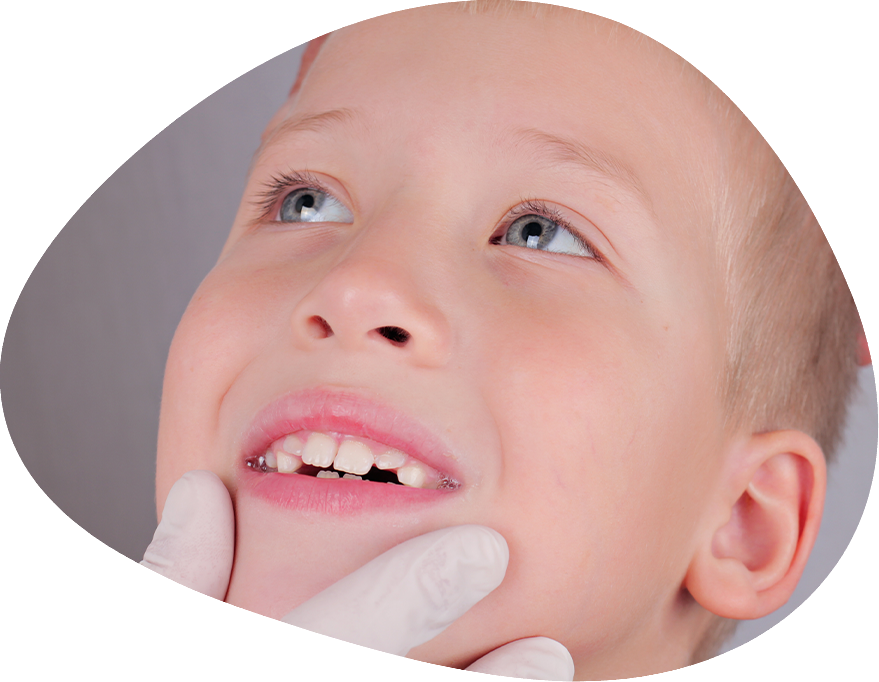
Many people assume orthodontic issues merely affect the way a person looks when they smile, but this isn’t the only concern. Having a problematic bite can also significantly influence your daily habits, such as your ability to eat comfortably and speak clearly. Your teeth may also end up at a higher risk of decay and infection if you aren’t able to clean them properly. The good news is that our team at SimpliBraces provides various treatment solutions to fix your bite and promote a healthier smile. Here are some of the most common orthodontic issues, why they may occur, and how they can impact your oral health. Be sure to reach out to us if you have questions!
Underbite
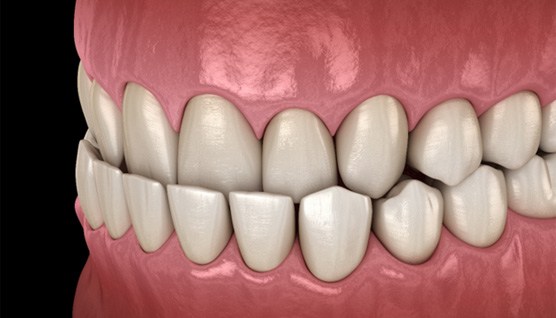
If your lower jaw passes underneath your upper jaw, causing your bottom teeth to sit in front of your upper arch, then you have an underbite. This condition usually causes a drastic change in facial shape, as your chin may protrude. You might also experience difficulties in your ability to chew your meals properly.
Overbite
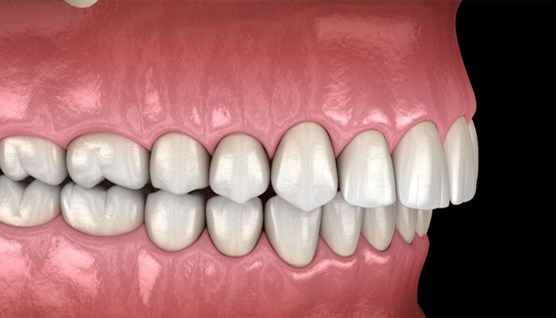
Generally speaking, a person’s upper teeth should rest just in front of their lower arch for a comfortable bite. However, if your upper ones are sitting too far in front or even cover your bottom pearly whites, then you likely have an overbite. Not only can this orthodontic problem lead to premature wear and tear of your enamel, but your lower teeth can also bite into the soft tissue at the roof, causing soreness and/or pain.
Generally Crooked Teeth
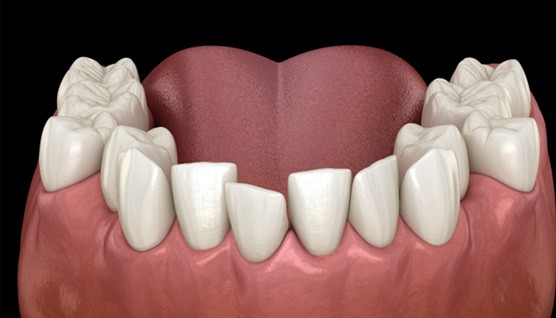
This is essentially when you have one or multiple teeth that are tilted or rotated. On top of being obvious, you may also end up experiencing an uneven bite, or malocclusion. You may have developed crooked teeth due to genetics, physical trauma, or by just having a small mouth.
Open Bite
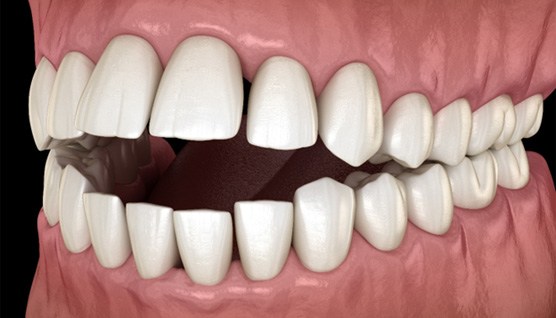
When biting down, both arches of teeth should be able to touch. However, if only your rear teeth make contact while your front ones stay separated, then you might have an open bite. The most common reason for this is excessive thumb/finger sucking during childhood development. If left untreated, it can impact normal oral tasks, such as speaking and eating.
Impacted Teeth
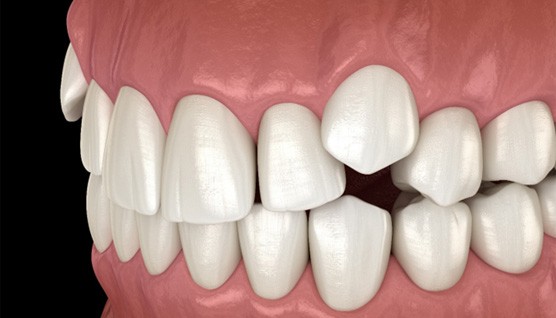
Do you have particular teeth that have yet to fully grow or erupt into position? This may indicate impaction, which is typically detected from an X-ray taken during a routine dental visit. Though this orthodontic issue might not come with any obvious symptoms, you’ll want to get it treated to prevent any other complications from starting later on.
Overcrowded Teeth
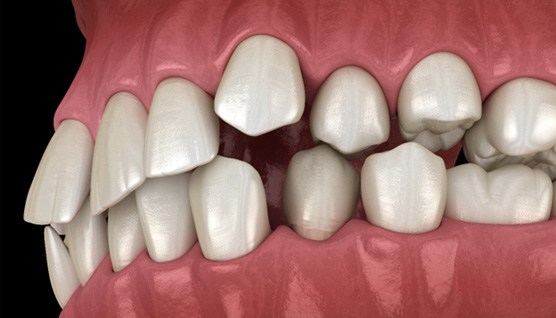
Did you know that some people are born with extra teeth or struggle with certain developmental problems in their jawbone? Oftentimes, this can cause an overcrowded bite, which can increase the risk of future damage and decay. Since this condition can lead to an uneven bite, it can end up straining the jaw joint.
Gaps Between Teeth
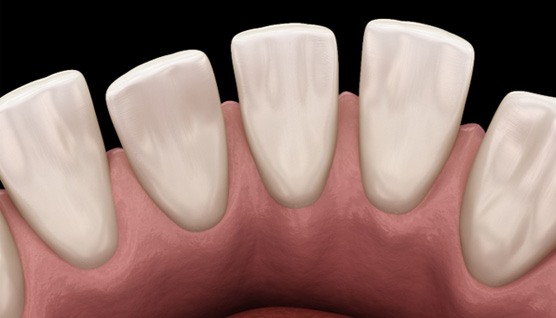
If your dental arch is too wide, you have smaller teeth, or you’re missing some of them, you can end up with gaps between your pearly whites. On top of being highly noticeable, the lack of uniformity can leave your smile vulnerable to damage, decay, and even gum irritation.
Crossbite
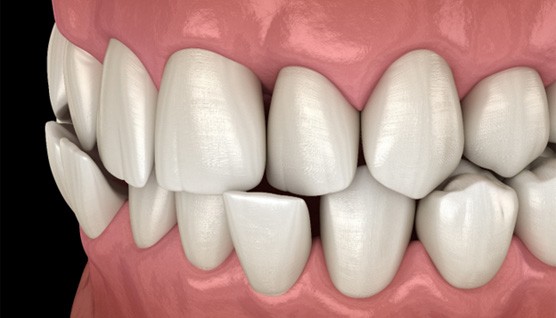
When some of your upper teeth sit behind your lower ones, this is known as a crossbite. Without treatment, this condition can hinder your jaw development and function. This orthodontic problem can occur on one or both sides of your mouth.
Excessive Overjet
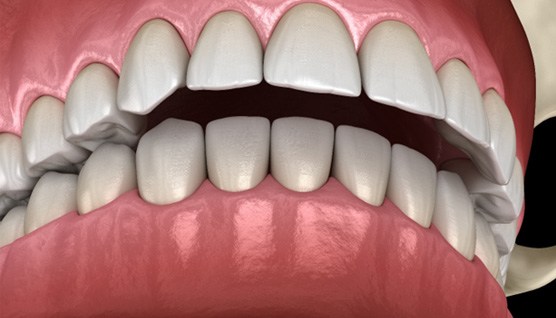
This is when the upper front teeth protrude further ahead of the lower ones, resulting in a drastic gap between them. Not only will the top teeth appear bigger than the bottom set, but you may struggle with eating properly and talking clearly.
Orthodontic Extractions
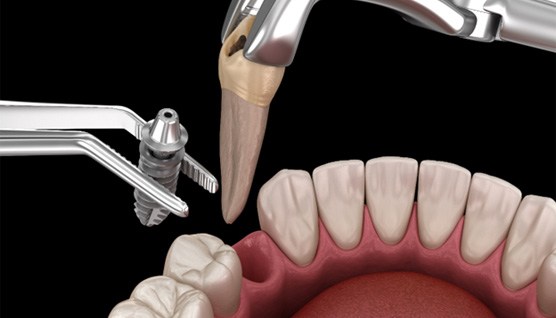
If you have certain teeth that are causing orthodontic issues, our team may have to extract them. Of course, this treatment plan will only be considered as a last resort for preserving your oral health. Unless this option is the most viable solution for you and your smile, we’ll focus on keeping as many of your natural teeth as possible.
